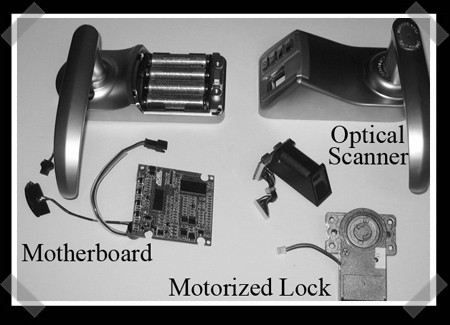[youtube=http://www.youtube.com/watch?v=GdN5IRVJOXI]
[Mike] is building his own Pulse Oximeter which uses light to measure the oxygen saturation in blood. One collateral benefit of this measurement is that pulse rate can be calculated from the same data. The parts used for the detector include a red LED, infrared LED, and a TSL230R light intensity measuring chip. As explained in the video above, each LED is shined through the tip of your finger and onto the light sensor. The IR LED is used as a baseline and compared to the red LED, which has some of its intensity absorbed by the red blood in your finger. This is a pretty approachable biometric concept so you may want to start here before moving on to more involved biometric interfaces.
[Thanks Russ]














